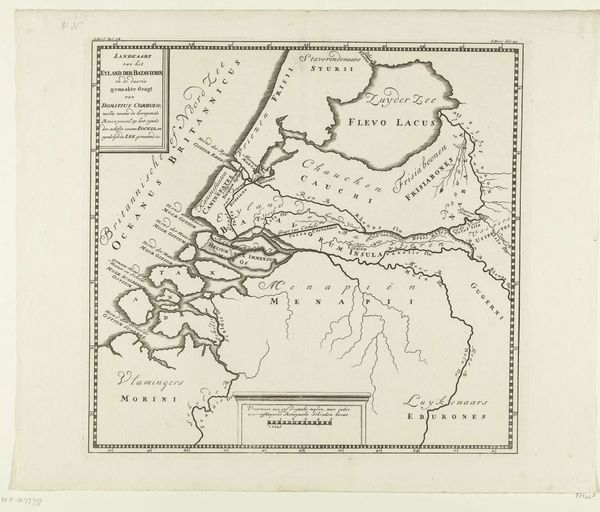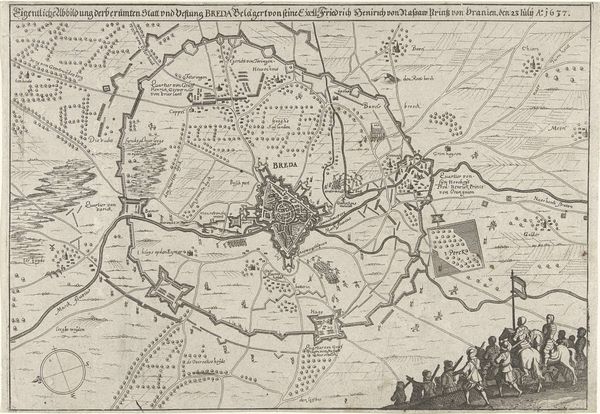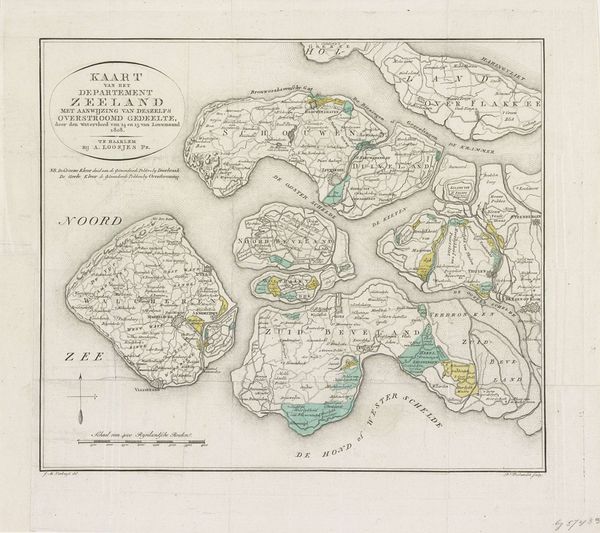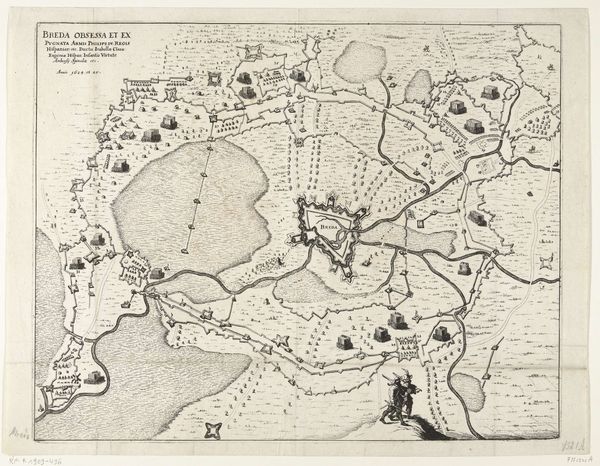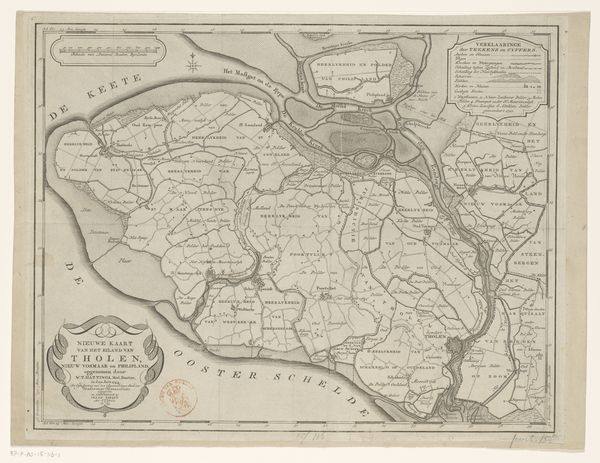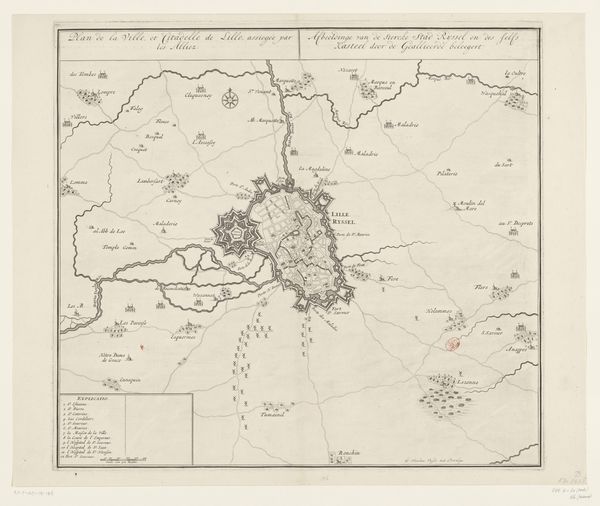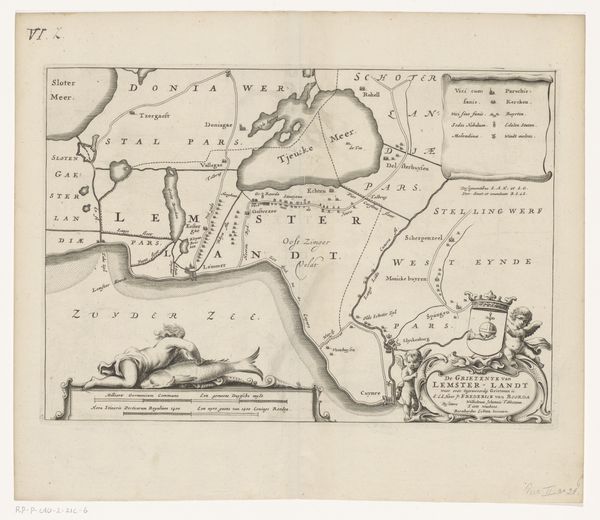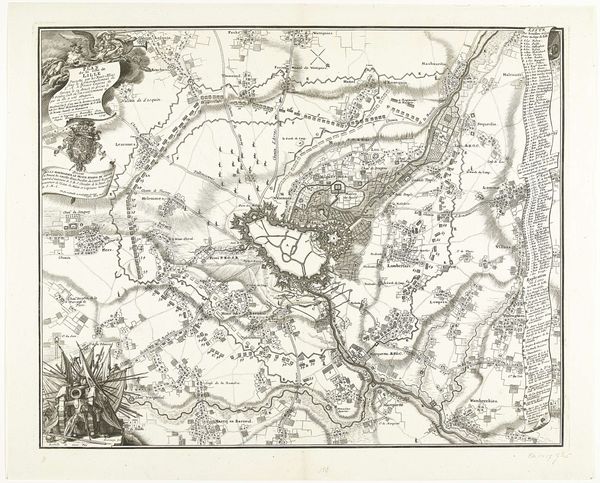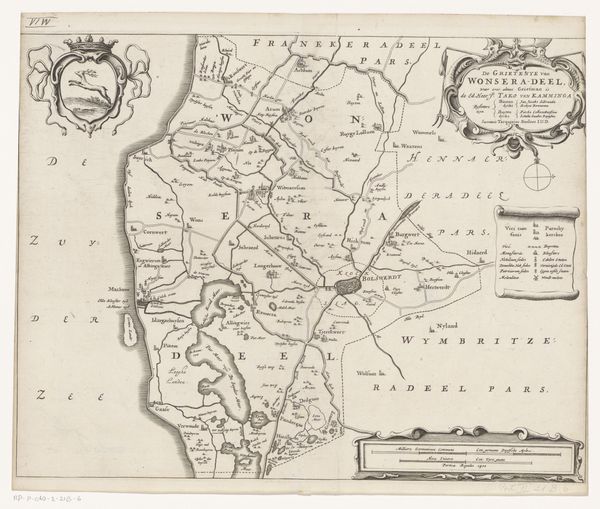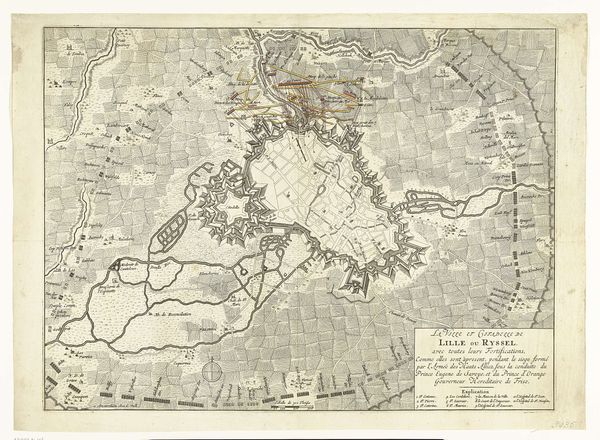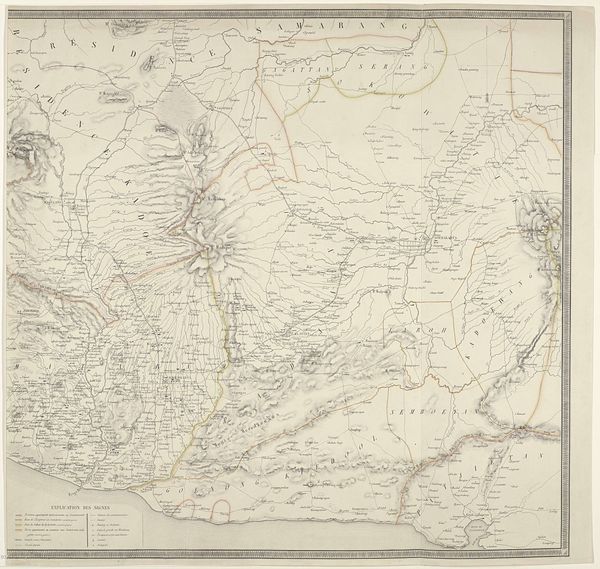
print, etching, engraving
#
baroque
# print
#
etching
#
old engraving style
#
history-painting
#
engraving
Dimensions: height 260 mm, width 302 mm
Copyright: Rijks Museum: Open Domain
Editor: Here we have "Kaart van het beleg van Rijssel," a detailed map showing the siege of Lille, created sometime between 1708 and 1733 by Abraham Allard. It’s an engraving, an intricate print. Looking at it, I’m immediately struck by how much information is packed into one image. What jumps out at you? Curator: Indeed. What strikes me is the deliberate layering of visual languages. It presents itself as a pragmatic battlefield plan, a strategic overview for military minds, but then the elegance of the Baroque aesthetic seeps through. Do you see the symbolism in how space is organized, Editor? Editor: You mean the layout? It’s quite geometric, almost like a grid. Curator: Precisely! It’s a visual manifestation of control and order – projecting a specific, arguably propagandistic, viewpoint of power and authority, meant to elicit an emotional response. This echoes older cosmologies, mirroring ideas of cosmic order, as revealed through structured imagery. How does this connection between strategic data and symbolic order strike you? Editor: That’s fascinating. It makes me think about how even seemingly objective information can be presented with a specific agenda in mind, or even carry embedded historical or emotional data. Thanks for helping me to see it that way! Curator: And I thank you, Editor, for considering the ways we transmit data to invoke specific symbolic reactions in our mind’s eye, thus influencing future collective cultural memory.
Comments
No comments
Be the first to comment and join the conversation on the ultimate creative platform.
